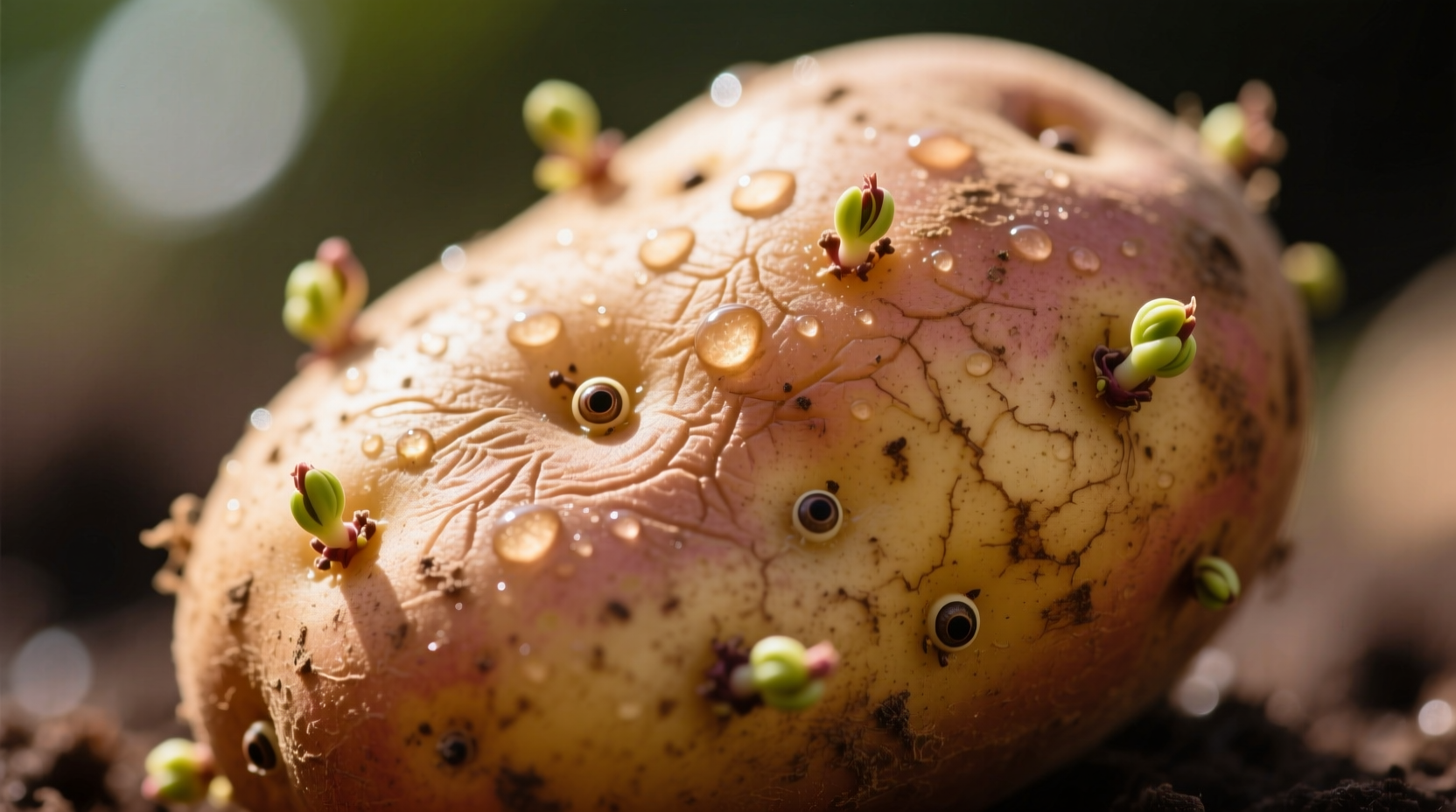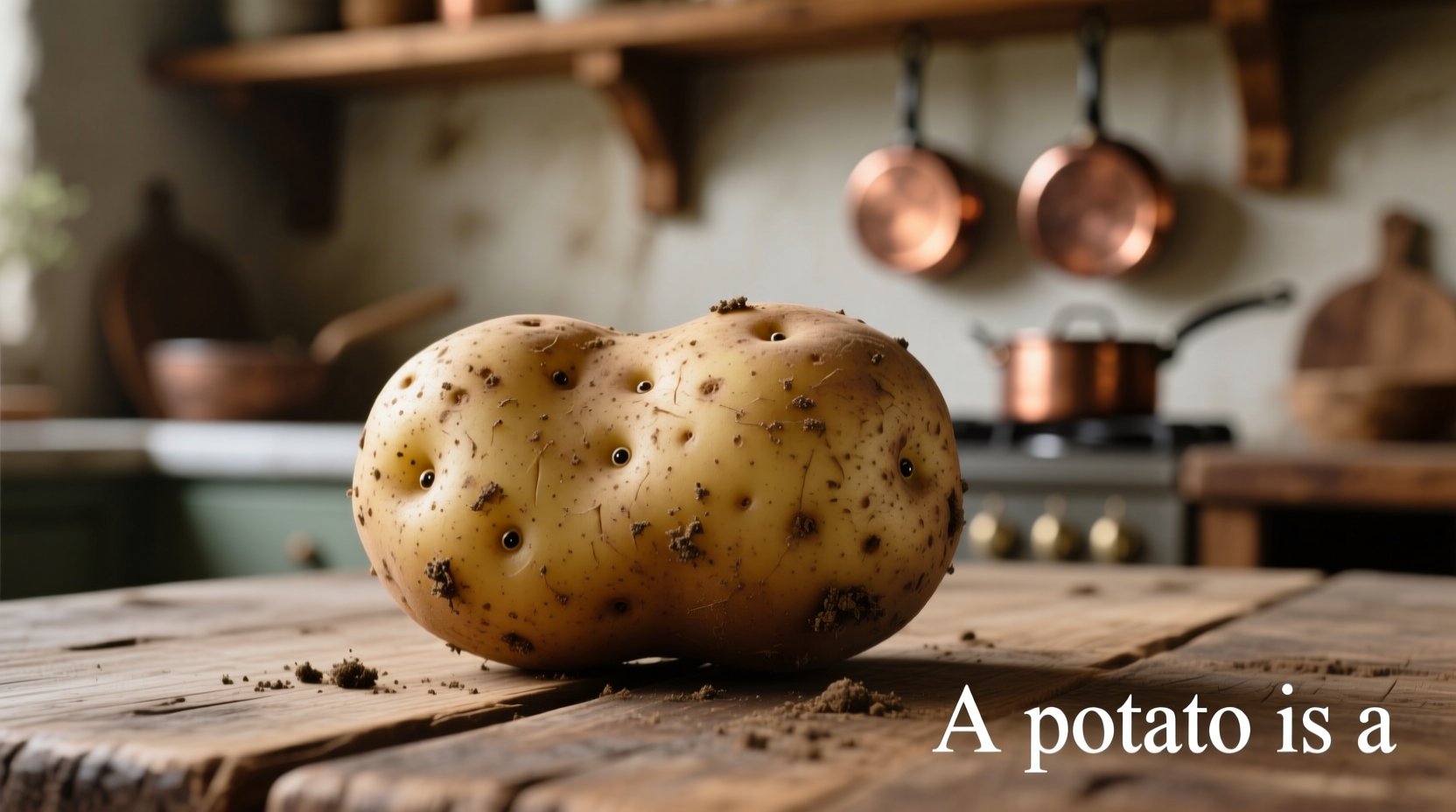Why Understanding Potato Classification Matters for Your Cooking and Nutrition
Knowing that a potato is a tuber rather than a root vegetable isn't just botanical trivia—it directly impacts how you store, prepare, and benefit from this versatile food. This distinction affects everything from proper storage techniques to maximizing nutritional value in your meals.
Botanical Breakdown: What Makes a Potato a Tuber?
When you examine a potato closely, you'll notice the "eyes"—those small indentations where sprouts emerge. This characteristic alone confirms its status as a tuber. Tubers are specialized storage structures that develop at the end of underground stems called stolons. The potato plant (Solanum tuberosum) uses these tubers to store energy in the form of starch.
According to the USDA Agricultural Research Service, potatoes belong to the nightshade family (Solanaceae), which also includes tomatoes and eggplants. This botanical classification explains why potato plants produce toxic compounds like solanine in their green parts.
| Characteristic | Tubers (Potatoes) | True Roots (Carrots) |
|---|---|---|
| Plant Structure Origin | Modified underground stems | Actual root tissue |
| "Eyes" or Buds | Present (can sprout new plants) | Absent |
| Internal Structure | Starchy parenchyma cells | Taproot with xylem/phloem |
| Nutrient Storage | Starch in specialized cells | Sugars in root tissue |
Common Misconceptions About Potato Classification
Many people mistakenly categorize potatoes as root vegetables because they grow underground. However, this simple criterion doesn't determine botanical classification. The Oregon State University Extension Service clarifies that while roots absorb water and nutrients, tubers like potatoes function primarily as energy storage organs.
Another widespread misconception is that all potato varieties are nutritionally identical. In reality, different potato types offer varying nutrient profiles. For example, purple potatoes contain anthocyanins with antioxidant properties, while yellow-fleshed varieties provide carotenoids.

Nutritional Profile: More Than Just Starch
Despite being primarily composed of carbohydrates (mostly starch), potatoes offer significant nutritional benefits when prepared properly. A medium-sized potato with skin provides:
- Nearly half your daily vitamin C needs
- Substantial potassium content (more than a banana)
- Good fiber source when eaten with skin
- B vitamins including B6
The USDA FoodData Central database confirms that boiling potatoes with skin intact preserves up to 90% of their nutrients, while peeling before cooking can reduce certain vitamins by 30-50%.
Historical Journey of the Potato
Potatoes originated in the Andes mountains of South America, where they've been cultivated for approximately 8,000 years. The timeline of potato domestication reveals fascinating adaptation:
- 8000-5000 BCE: Initial domestication in modern-day Peru and Bolivia
- 1530s: Spanish conquistadors introduce potatoes to Europe
- 1700s: Potatoes become staple crop across Europe
- 1845-1852: Irish Potato Famine highlights global dependence on this crop
- Today: Potatoes rank as the world's fourth largest food crop after maize, wheat, and rice
Practical Applications: Choosing and Using Potatoes
Understanding that a potato is a tuber helps you select the right variety for your cooking needs. Different potato types excel in specific applications:
- Starchy potatoes (Russet): Ideal for baking, mashing, and frying due to high starch content
- Waxy potatoes (Red, New): Better for boiling, salads, and roasting as they hold shape
- All-purpose potatoes (Yukon Gold): Versatile for most cooking methods
Proper storage is crucial—keep potatoes in a cool, dark place with good ventilation. Never refrigerate, as cold temperatures convert starch to sugar, altering flavor and causing darkening when cooked.
When Potato Classification Actually Matters
For most home cooks, knowing that a potato is a tuber might seem academic. However, this knowledge becomes practically important in specific scenarios:
- Gardening: Understanding tuber growth helps with proper planting depth and hilling techniques
- Food safety: Recognizing that green potato skin indicates solanine (a toxic compound)
- Nutrition planning: Accounting for potato's carbohydrate content in dietary management
- Culinary applications: Selecting appropriate varieties based on starch content
Frequently Asked Questions
Is a potato a vegetable or a starch?
Botanically, potatoes are classified as vegetables since they're edible plant parts. However, nutritionally they're considered starchy vegetables due to their high carbohydrate content. The USDA groups potatoes with other starchy vegetables like corn and peas for dietary planning purposes.
Why are potatoes called tubers instead of roots?
Potatoes are tubers because they develop from underground stems (stolons), not root tissue. Key evidence includes the presence of "eyes" (buds that can sprout new plants), which true roots don't have. Roots like carrots absorb water and nutrients, while tubers primarily store energy for the plant.
Can you eat potatoes that have sprouted?
Sprouted potatoes are generally safe to eat if they remain firm and the sprouts are removed completely. However, if the potato has turned green or become soft and shriveled, it should be discarded as it may contain elevated levels of solanine, a naturally occurring toxin.
What's the healthiest way to cook potatoes?
Steaming or boiling potatoes with skin intact preserves the most nutrients. Baking is also excellent as it doesn't require added fats. Avoid deep-frying, which significantly increases calorie content. For maximum nutritional benefit, consume potatoes with their skin, which contains substantial fiber and nutrients.
Are sweet potatoes and regular potatoes related?
Despite similar culinary uses, sweet potatoes (Ipomoea batatas) and regular potatoes (Solanum tuberosum) belong to completely different plant families. Sweet potatoes are true roots from the morning glory family, while regular potatoes are tubers from the nightshade family. They have different nutritional profiles and growing requirements.











 浙公网安备
33010002000092号
浙公网安备
33010002000092号 浙B2-20120091-4
浙B2-20120091-4